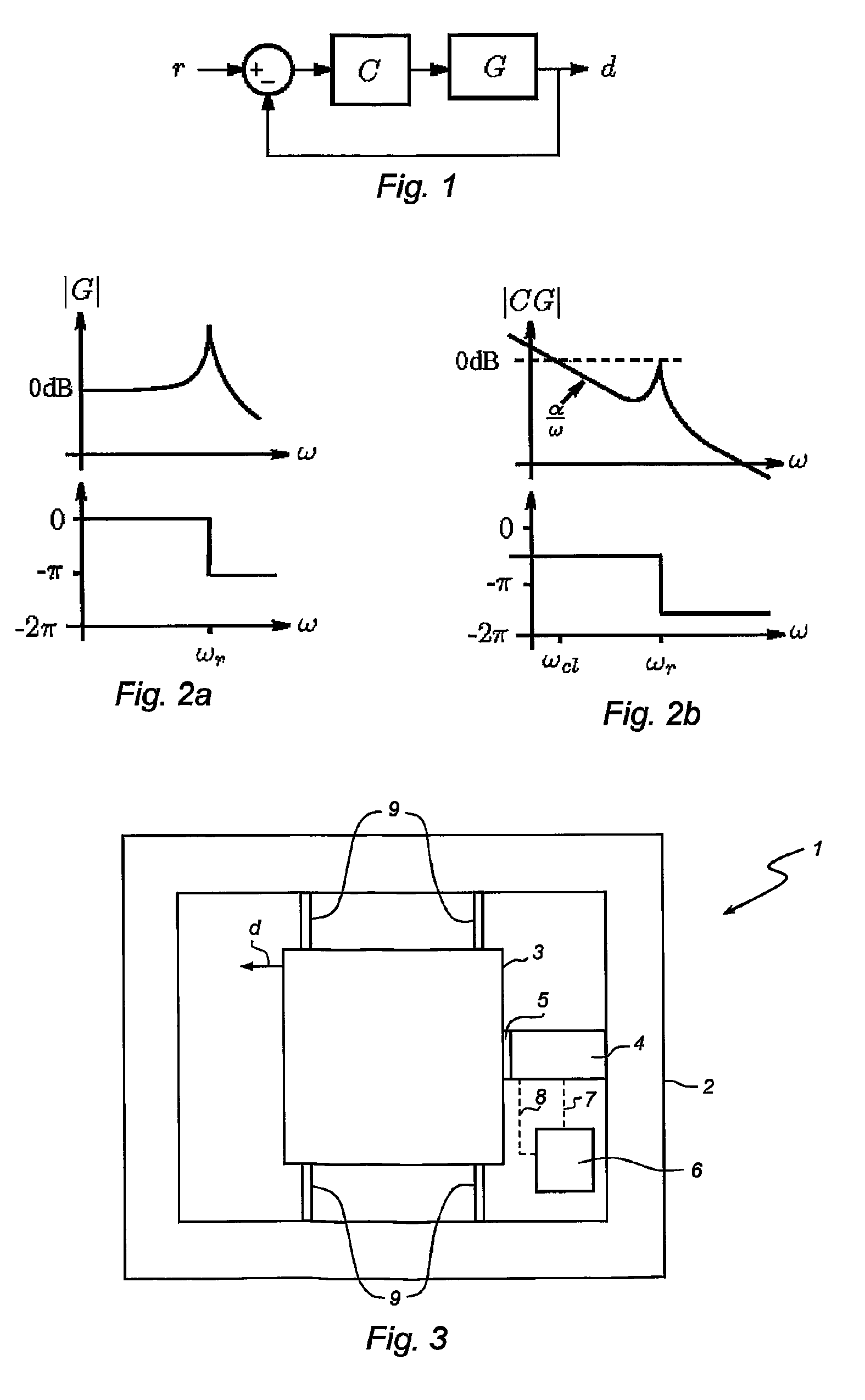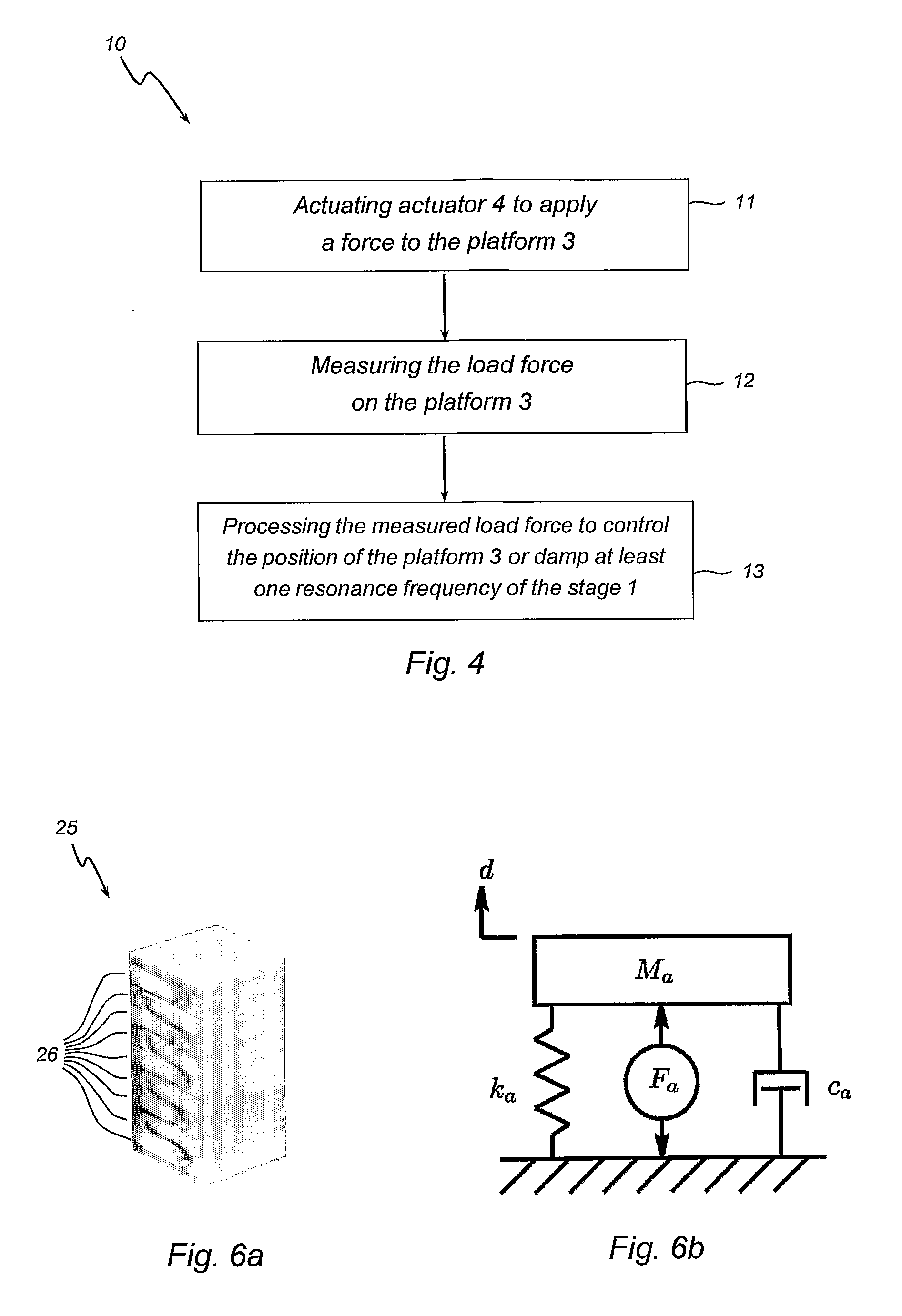Positioning system and method
a piezoelectric actuator and positioning system technology, applied in the field of positioning methods and systems, can solve the problems of mechanical resonance, affecting the positioning accuracy, scanning speed and stability, and severely limited piezoelectric actuator positioning accuracy, etc., to improve the closed-loop response of the system, improve the accuracy of positioning and positioning, and improve the effect of tracking and damping performan
- Summary
- Abstract
- Description
- Claims
- Application Information
AI Technical Summary
Benefits of technology
Problems solved by technology
Method used
Image
Examples
Embodiment Construction
[0118]A preferred application of the invention is in the field of nanopositioning systems, apparatuses and methods. Such systems and apparatuses typically have a fixed base with a movable platform or stage, with guiding flexures and / or mechanical linkages so as to constrain the movement of the platform or stage to a single degree of freedom. The object is mounted to or located on the platform or stage and the apparatus moves the platform to precisely position the object. Additional flexures and / or mechanical linkages may also be connected to the platform so that the platform can have multiple degrees of freedom, and can be constrained to move in a single degree of freedom at any one time.
[0119]As discussed above, such nanopositioning systems suffer from limitations due to hysteresis, creep and mechanical resonance. In particular, mechanical resonance limits the operation of the nanopositioning systems in terms of its positioning accuracy, speed and stability.
[0120]As the lowest reso...
PUM
 Login to View More
Login to View More Abstract
Description
Claims
Application Information
 Login to View More
Login to View More - R&D
- Intellectual Property
- Life Sciences
- Materials
- Tech Scout
- Unparalleled Data Quality
- Higher Quality Content
- 60% Fewer Hallucinations
Browse by: Latest US Patents, China's latest patents, Technical Efficacy Thesaurus, Application Domain, Technology Topic, Popular Technical Reports.
© 2025 PatSnap. All rights reserved.Legal|Privacy policy|Modern Slavery Act Transparency Statement|Sitemap|About US| Contact US: help@patsnap.com



